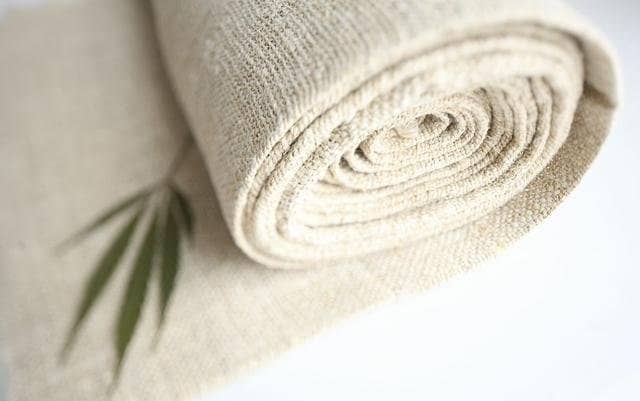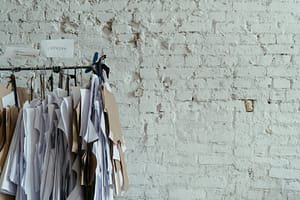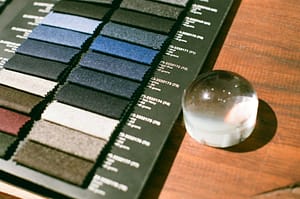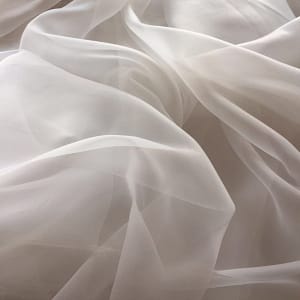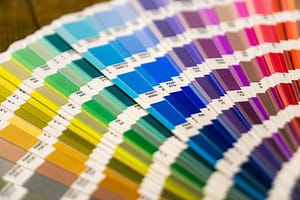Origins of Bamboo Fabrics
The use of bamboo dates back thousands of years, primarily for construction, tools, and paper in ancient Asia. However, its journey into textiles began much later, driven by innovations in material science and the growing need for sustainable alternatives.
Modern bamboo fabrics emerged in the late 20th century, as advancements allowed bamboo to be processed into fibers suitable for weaving. Today, they are a symbol of eco-friendly innovation, combining traditional plant usage with contemporary textile techniques.
What Are Bamboo Fabrics?
Bamboo fabrics are textiles made from fibers derived from the bamboo plant. They are known for their softness, breathability, and eco-friendly qualities. Depending on the processing method, bamboo fabrics can vary in texture and performance.
Types of Bamboo Fabrics:

Bamboo Viscose: Made using chemical processing, offering a silky texture.

Bamboo Linen: Mechanically processed, retaining a coarser, natural feel.

Blended Fabrics: Bamboo combined with other fibers like cotton for enhanced durability or functionality.
These fabrics cater to diverse needs, from everyday wear to luxurious bedding, making bamboo a versatile choice in sustainable textiles.
Characteristics of Bamboo Fabrics
Bamboo fabrics are prized for their unique qualities, making them a standout choice in sustainable textiles. Key characteristics include:
- Softness and Comfort: Comparable to silk or cashmere, bamboo fabrics are incredibly gentle on the skin.
- Breathability: They allow excellent air circulation, keeping the wearer cool and dry.
- Moisture-Wicking: Bamboo fabrics effectively absorb and evaporate moisture, making them ideal for activewear and humid climates.
- Antimicrobial Properties: Naturally resistant to bacteria and odors, promoting freshness.
- Eco-Friendliness: Derived from a fast-growing, renewable resource, bamboo fabrics are biodegradable and less resource-intensive to produce.
These attributes ensure that bamboo fabrics remain a popular choice for both functional and luxurious applications.
Production Process
Bamboo fabrics are created through distinct production methods, each influencing the fabric’s texture and environmental impact.
| Stage | Mechanical Process | Chemical Process |
|---|---|---|
| Raw Material Prep | Bamboo stalks are crushed into pulp mechanically. | Bamboo stalks are broken down using chemical solutions. |
| Fiber Extraction | Natural enzymes release fibers from the pulp. | Chemical solutions dissolve the bamboo into cellulose. |
| Spinning | Fibers are combed and spun into yarn, creating bamboo linen. | Cellulose is regenerated into threads, forming bamboo viscose. |
| Weaving | Yarn is woven into fabric, retaining a coarse texture. | Threads are woven into smooth, silky textiles. |
The mechanical process is more eco-friendly but yields coarser fabrics, while the chemical process creates softer fabrics but raises environmental concerns due to chemical usage.
Advantages and Disadvantages
Bamboo fabrics come with numerous benefits, but they also have certain limitations. Here’s an overview:
Advantages:
- Eco-Friendly: Bamboo is a renewable resource that grows quickly without pesticides.
- Soft and Comfortable: Comparable to luxury fabrics like silk or cashmere.
- Moisture-Wicking: Keeps the wearer dry by absorbing and evaporating sweat.
- Breathable: Enhances airflow, making it suitable for warm climates.
- Antimicrobial Properties: Naturally resists bacteria and odors.
- Biodegradable: Breaks down naturally without harming the environment.
Disadvantages:
- Chemical Processing Concerns: Bamboo viscose production involves chemicals that may affect sustainability.
- Cost: High-quality bamboo fabrics can be more expensive than conventional textiles.
- Durability Issues: Some bamboo fabrics may wear out faster than synthetic counterparts.
- Limited Availability: Pure bamboo fabrics are less accessible compared to blended or synthetic options.
Uses of Bamboo Fabrics
Bamboo fabrics have a wide range of applications due to their unique properties, making them popular in various industries.
Clothing:
- Activewear: Bamboo’s moisture-wicking and breathable qualities make it ideal for fitness clothing like T-shirts, leggings, and socks.
- Underwear: Softness and comfort make bamboo fabrics a popular choice for undergarments.
- Sleepwear: Bamboo’s natural cooling and soft properties make it perfect for pajamas and loungewear.
Home Textiles:
- Bedding: Bamboo sheets and pillowcases are luxurious, hypoallergenic, and naturally cool, providing a great night’s sleep.
- Towels: Bamboo towels are highly absorbent and quick-drying, making them an excellent choice for bath linens.
- Mattress Protectors: Known for their antimicrobial properties, bamboo fabrics help maintain hygiene in bedding.
Industrial and Eco-Conscious Applications:
- Medical Textiles: Bamboo’s antimicrobial properties are utilized in products like bandages, medical gowns, and face masks.
- Sustainable Fashion: Designers are increasingly turning to bamboo for eco-friendly fashion lines and accessories.
Bamboo fabrics are becoming a staple in eco-friendly and functional products, expanding beyond the textile industry into innovative applications.
Care and Maintenance
Bamboo fabrics are durable yet delicate, requiring proper care to maintain their quality:
- Washing: Use a gentle cycle with cold or lukewarm water and mild detergent to prevent damage. Avoid bleach or strong chemicals.
- Drying: Air-dry to preserve softness, or tumble-dry on low heat. Keep fabrics out of direct sunlight to prevent fading.
- Ironing: Use a low heat setting if needed, and iron inside out to protect the fibers.
- Storage: Fold and store in a cool, dry place, avoiding heavy pressure to retain the fabric’s shape.
These steps ensure bamboo fabrics remain soft, breathable, and long-lasting.
Future of Bamboo Fabrics
The future of bamboo fabrics looks promising, as the demand for sustainable and eco-friendly materials continues to grow. Key trends shaping their future include:
- Innovative Processing Methods: Research is focused on improving mechanical and closed-loop processes to reduce environmental impact, making bamboo fabrics even greener.
- Expansion into New Markets: Bamboo fabrics are being explored for technical and industrial uses, such as biodegradable composites and environmentally friendly packaging.
- Blended and Performance Textiles: Combining bamboo with advanced fibers to create high-performance fabrics for sportswear, medical textiles, and outdoor gear.
- Increased Consumer Awareness: Rising awareness of sustainability is driving demand for bamboo products, encouraging manufacturers to adopt more eco-friendly practices.
With continued innovation and responsible production, bamboo fabrics are set to play a significant role in shaping the future of sustainable fashion and textiles.
Conclusion
Bamboo fabrics embody the perfect balance between sustainability, comfort, and versatility. Their eco-friendly production, combined with properties like softness, breathability, and antimicrobial benefits, makes them a standout choice for consumers seeking environmentally conscious textiles. From clothing to home goods, bamboo fabrics continue to revolutionize the textile industry with their innovative applications and ethical appeal.
As advancements in technology and sustainable practices evolve, bamboo fabrics are poised to become even more prominent in the global market, aligning with the growing demand for greener alternatives in fashion and beyond.

